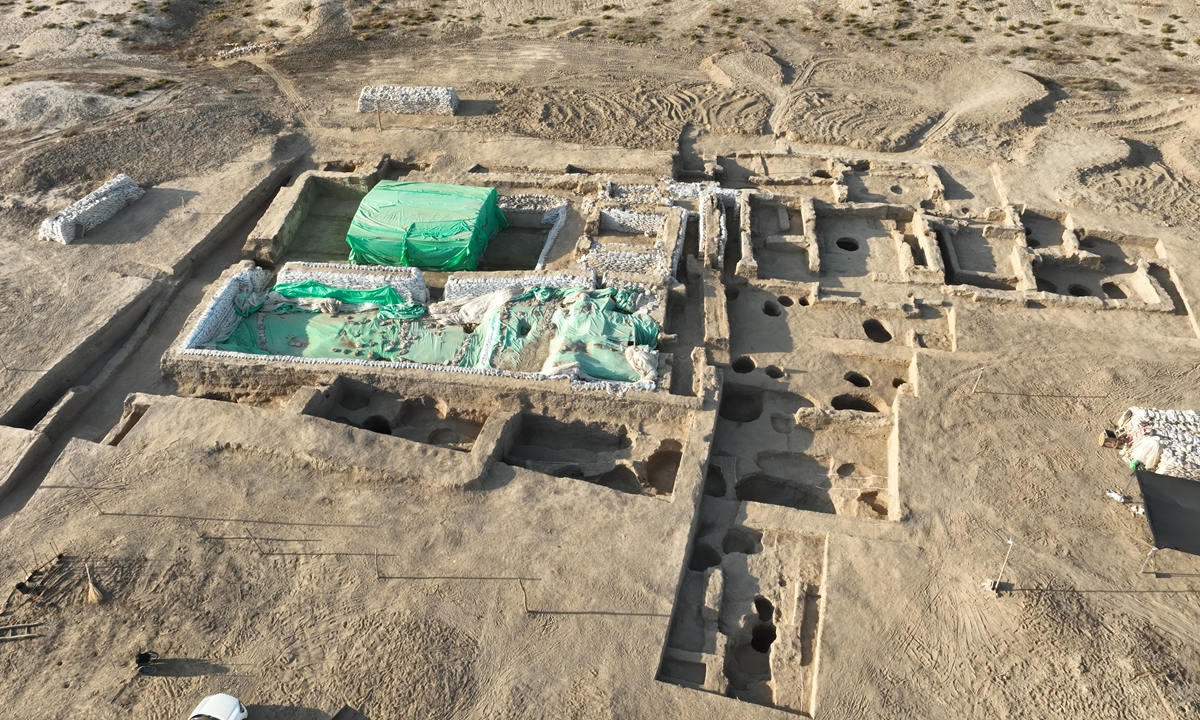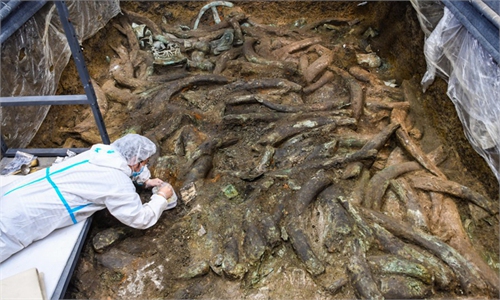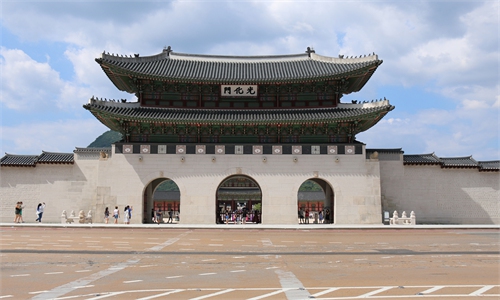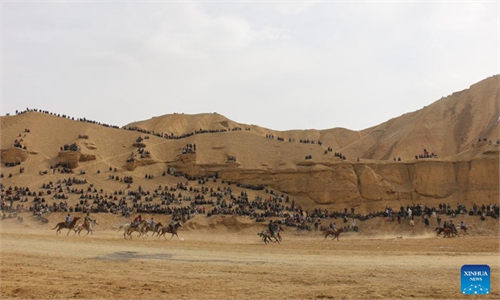
The Tangchaodun Ruins, a Tang Dynasty (618-907) site with hints of Roman architecture in Northwest China's Xinjiang Uygur Autonomous Region Photo:Sina Weibo
The 22 candidates for China's Top 10 archaeological discoveries of 2022 were recently revealed by the National Cultural Heritage Administration. Among them, the Tangchaodun Ruins, a Tang Dynasty (618-907) site with hints of Roman architecture in Northwest China's Xinjiang Uygur Autonomous Region, looks like a major contender, as it shows the ancient cultural exchanges that took place between China and the West along the Silk Road.The ruins were built more than 1,000 years ago during the Tang Dynasty and continued to be used by ancient Chinese into the Yuan Dynasty (1271-1368). They are located in Xinjiang's Qitai county, the Changji Hui Autonomous Prefecture.
The remains of a "public bath" found at the site reveal Roman aesthetics. Archaeologists from Renmin University of China and the Xinjiang Uygur Autonomous Region Institute of Cultural Relics and Archaeology introduced the discoveries they made during their five-year excavation (2018-22) of the site.
The "Roman bath" was built with bricks and had stoves and water wells surrounding it.
Xue Minjun, an expert on Tang Dynasty culture, told the Global Times that the Romanesque nature of the ruins show ancient Chinese people's "good sensibilities in embracing Western culture" and reveal the impact of China-West cultural exchanges on Xinjiang, a pivotal stop along the ancient Silk Road. The bath had two stories. The first floor hides underground heating facilities. The upper story was the main area for bathing. It was "scientific and modern," showing the "spirit of creation" of the Tang people, Ma Bo, an architecture archaeologist, told the Global Times.
"They reflect the integration and innovation of East-West architectural traditions and technology along the Silk Road," said Wei Jian, the project's lead.
Built on a rammed-earth platform, the ruins of a Buddhist temple decorated with murals were also found at the site. The ruins were once the main axis for the religion's spread from India toward east as well as the westward movement of Central Plain's Buddhist culture.
Buddhism is not the only religious culture that has been found at the site. The Tangchaodun Ruins revealed a Nestorian temple some 2,000 square meters in size. The discovery shows how the ancient Christian sect that originated in today's Syria was embraced by ancient China. Wei said that aside from cultural traces, the site also contained relics such as red pottery basins and Kaiyuan Tongbao, a type of Tang Dynasty coin, which embody Central Plains' cultural and social traditions. "They show ancient China's inclination in harmoniously embracing cultural diversity, beliefs and various religions," Xue noted.
Other ancient ruins contending for a place in the 2022 top 10 list are the Ruins of Liyang City in Shaanxi Province and the Wenjiangduo Ruins in the Xizang Autonomous Region, which reveals the cultural history of the 8th-century Tubo Empire.



